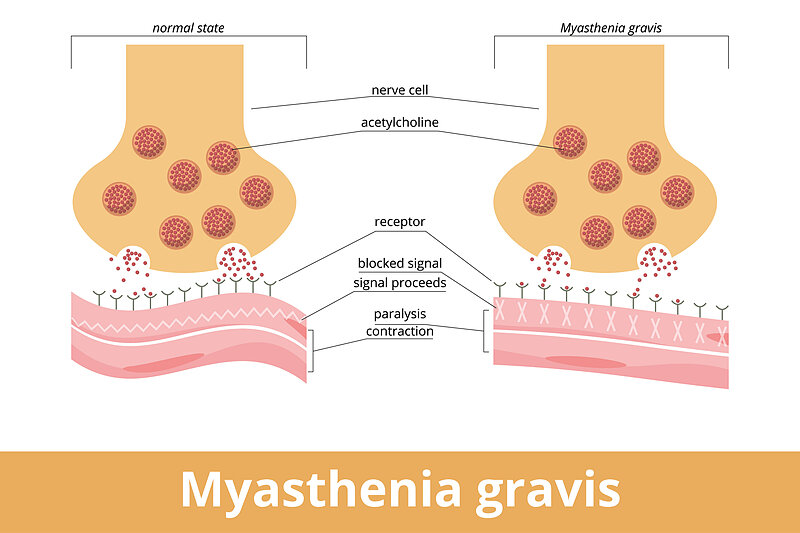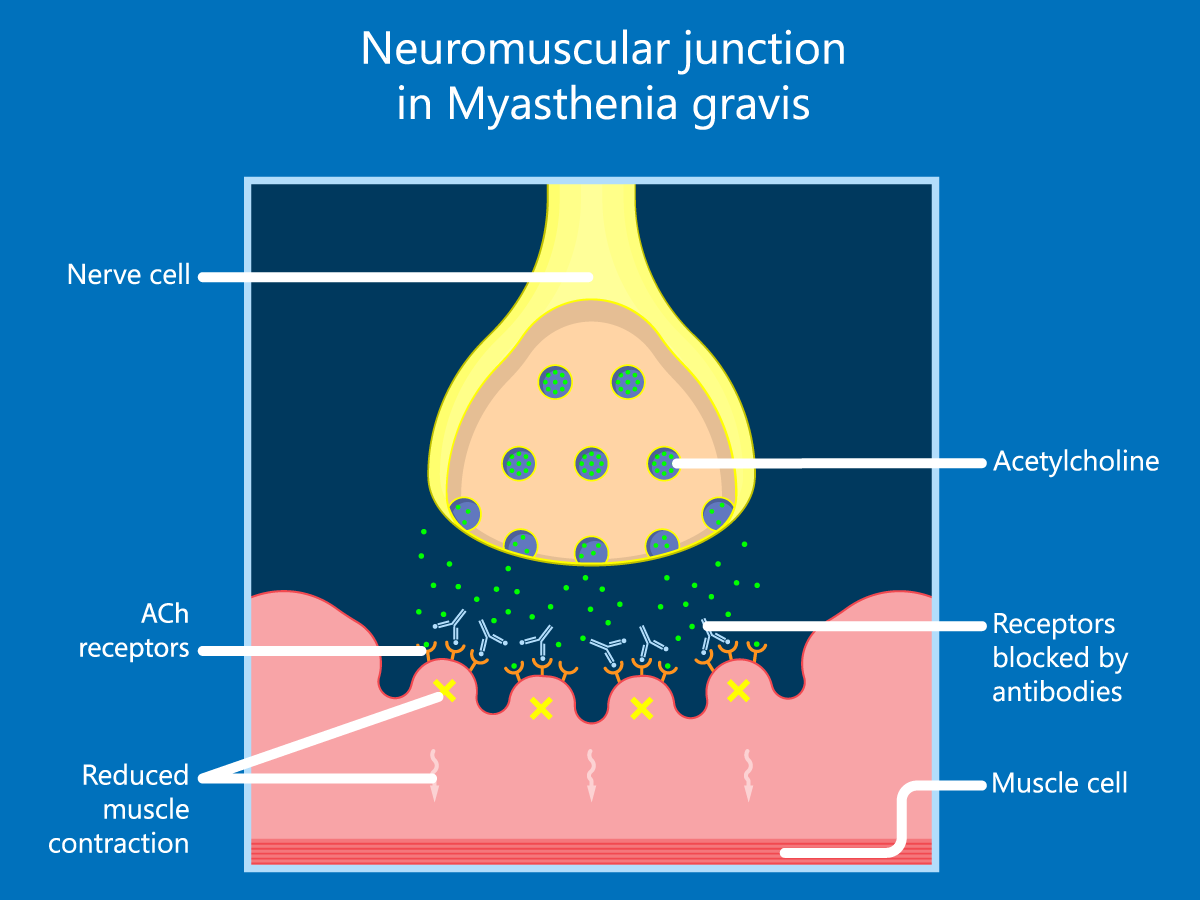Myesthenia Gravis
Myasthenia gravis is a chronic autoimmune disorder that causes weakness in the skeletal muscles—the muscles responsible for movement. The condition occurs when the immune system produces antibodies that block or destroy the receptors for acetylcholine, a neurotransmitter that helps muscles contract. This disruption in communication between nerves and muscles leads to muscle weakness and fatigue.
Treatment for Myasthenia Gravis aims to improve muscle strength and control the immune response. Common options include anticholinesterase medications (like pyridostigmine) to enhance nerve-muscle communication, corticosteroids and immunosuppressants to reduce immune activity, and plasmapheresis or intravenous immunoglobulin (IVIG) for rapid symptom relief in severe cases. In some patients, surgical removal of the thymus gland (thymectomy) may provide long-term benefits. Treatment is personalized based on symptom severity and patient response.

The hallmark of myasthenia gravis is muscle weakness that worsens with activity and improves with rest. Commonly affected muscles include those that control eye movement and eyelids, facial expressions, chewing, swallowing, and sometimes breathing. Early symptoms often involve drooping eyelids (ptosis) and double vision (diplopia). As the disease progresses, other muscles may be affected, potentially leading to difficulties in speaking, walking, or even breathing—known as a myasthenic crisis, a medical emergency.
The exact cause of the autoimmune response in myasthenia gravis is unknown, though it’s often associated with abnormalities in the thymus gland, which may be enlarged or contain tumors (thymomas). It can affect people of any age but is more commonly diagnosed in women under 40 and men over 60.

Diagnosis typically includes blood tests for antibodies, electromyography (EMG), and imaging studies like CT or MRI to examine the thymus gland. A common bedside test is the ice pack test, which may temporarily improve eyelid drooping.
Treatment options aim to improve communication between nerves and muscles and suppress the autoimmune response. These include anticholinesterase medications (like pyridostigmine), corticosteroids, immunosuppressants, and in some cases, surgical removal of the thymus gland. Plasmapheresis or intravenous immunoglobulin (IVIG) may be used during severe episodes.
With proper treatment, many individuals with myasthenia gravis can lead full, active lives.
